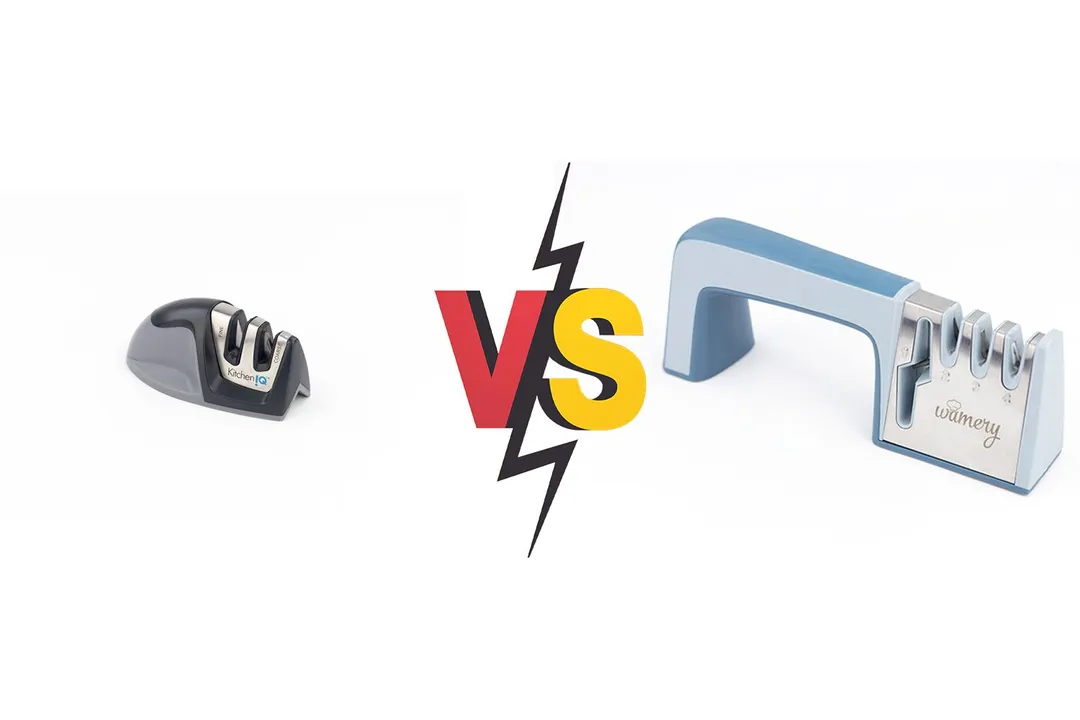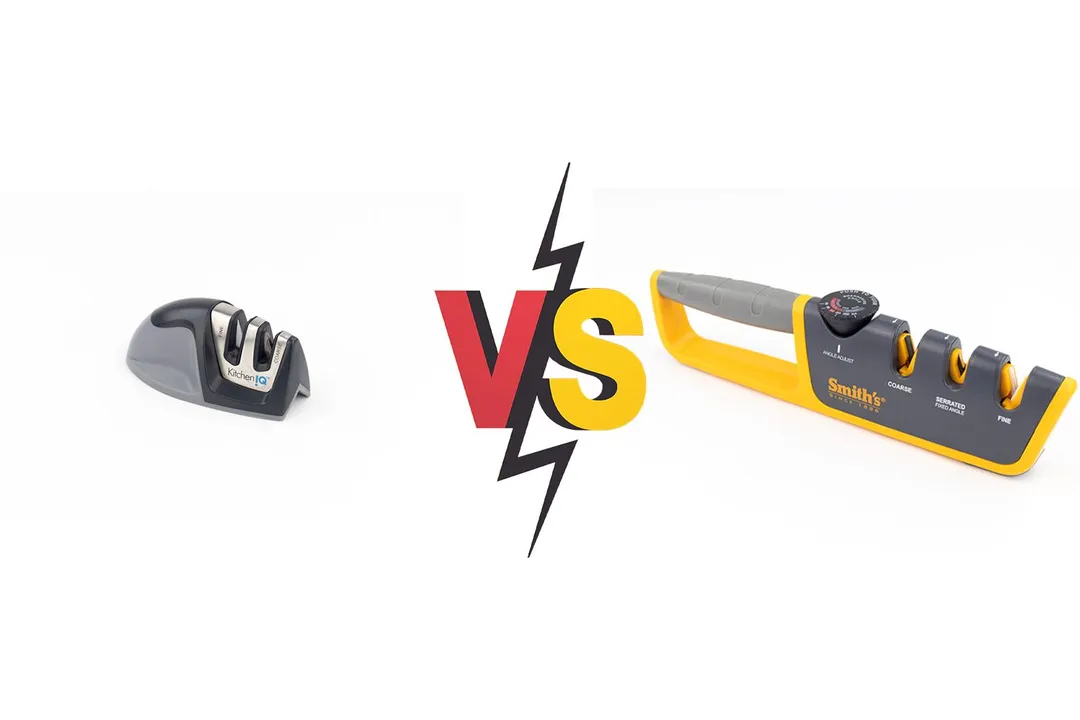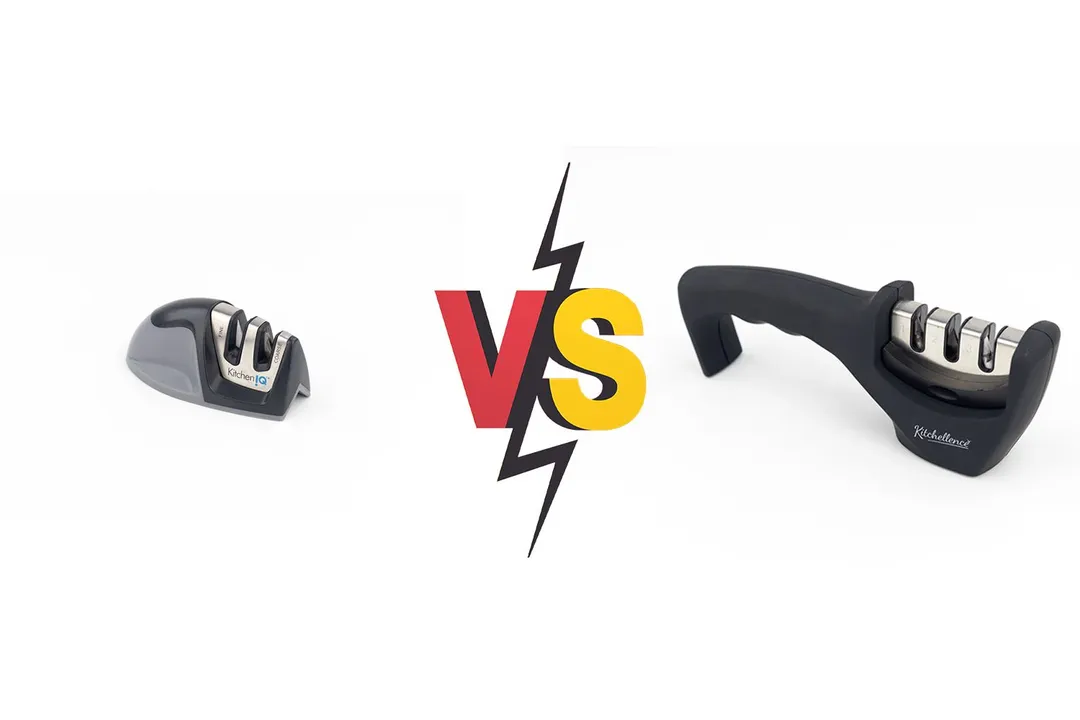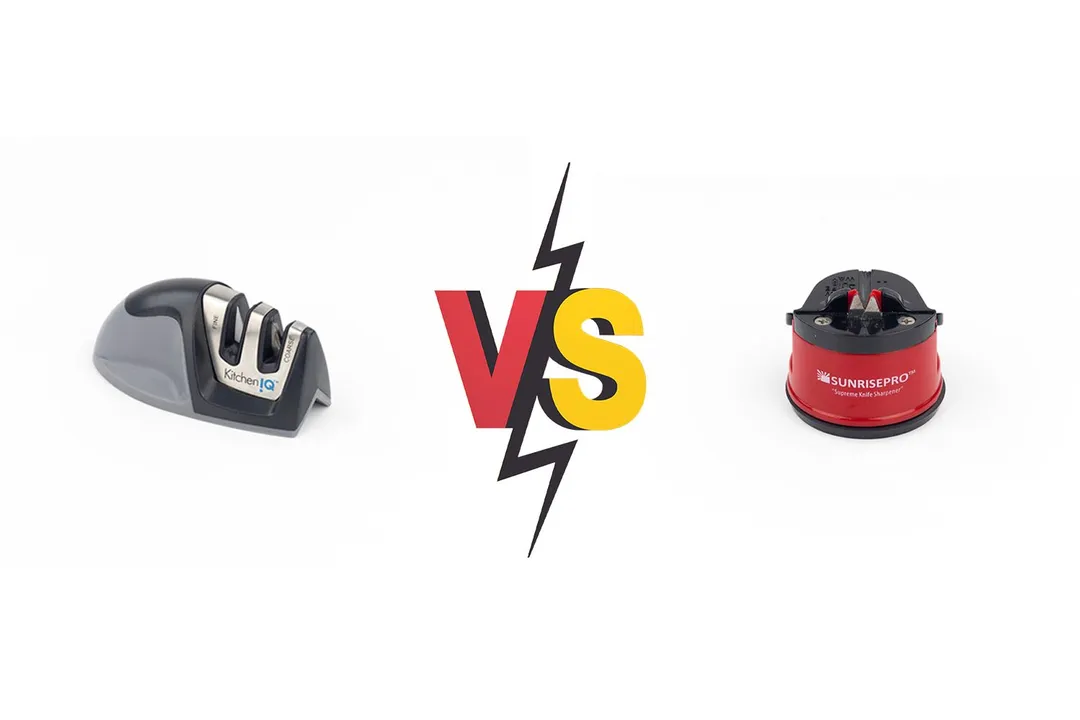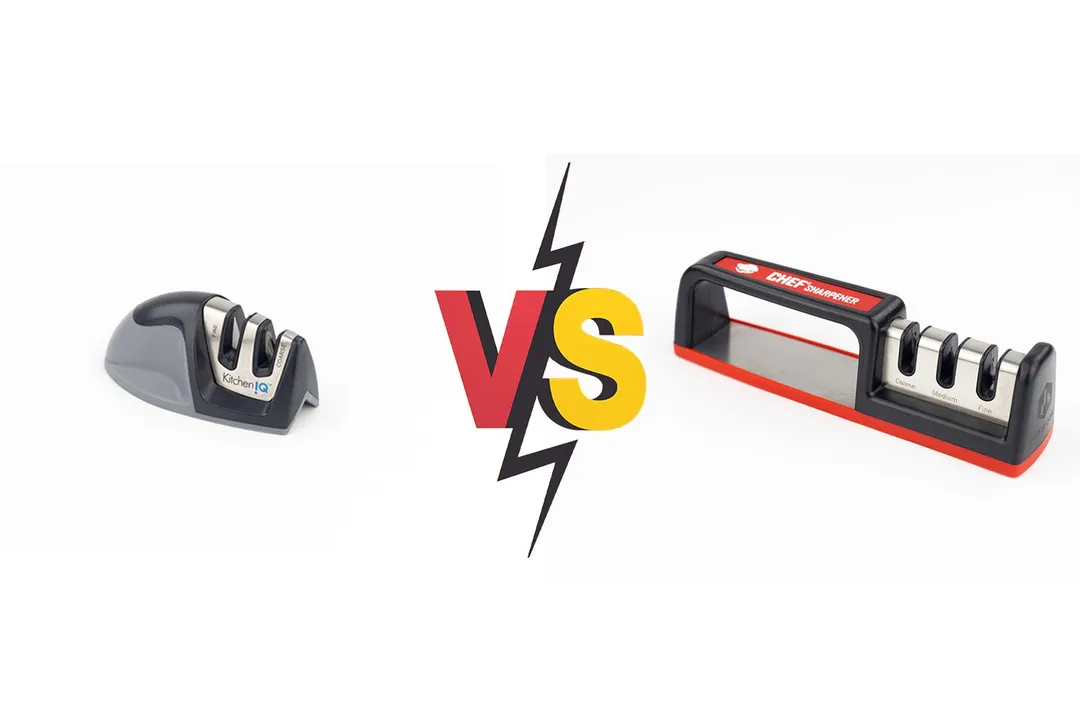Our recommendations are made independently through Research & Testing. We may receive commissions from purchases made via our links.
KitchenIQ 50009 vs Longzon 4-stage Side-by-Side Comparison
We put the KitchenIQ 50009 and the Longzon 4-stage manual sharpener through a bunch of tests. Here’s how they stacked up.
KitchenIQ 50009
Tested Using Methodology v1.1Longzon 4-stage
Tested Using Methodology v1.1
Overall Verdict
The Longzon 4-stage sharpener wouldn’t be our first choice for a pull-through sharpener, but it does come out top when compared to the KitchenIQ 50009.
The KitchenIQ’s main selling point is its “edge grip”—a base that can grip onto the edge of your table or kitchen countertop. We’d give a shout out for its solid build and great fitting, too. But where actual sharpening is concerned, it’s among the slowest and least effective handheld sharpeners we’ve tested.
The Longzon itself wasn’t a top performer when it came to speed and sharpness. But it was much more forgiving of the knife’s edge and its more substantial body was easier to grip and work with. The extra slot for scissors just tops it off as the more practical option.
Pros & Cons
- Easy storage
- Affordable price
- Base works on both counter edge and flat surfaces
- Simple, sturdy design
- Sleek design
- Substantial, accommodative size
- Fine, smooth knife edge
- Inclusion of protective gloves
- Slot for scissors
- Awkward small size
- Long sharpening time
- Tall base
- Slow sharpening
- Ineffective slot layout
Key Specs
Where to Buy
*You help support HealthyKitchen101's product testing and reviews by purchasing from our retail partners.
Analysis and Test Results
Performance
Sharpening Time to Cut a Lemon
Material Retention


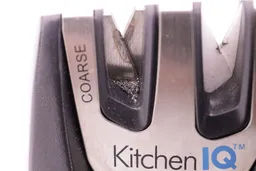
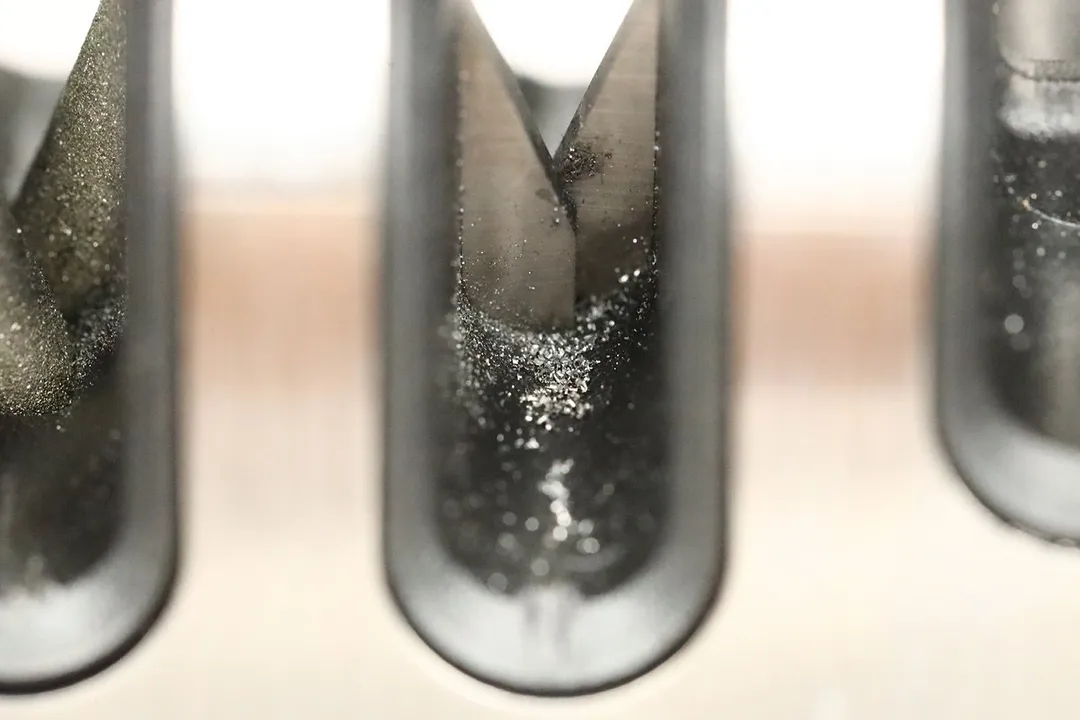


Maximum Sharpness Achieved
Edge Smoothness
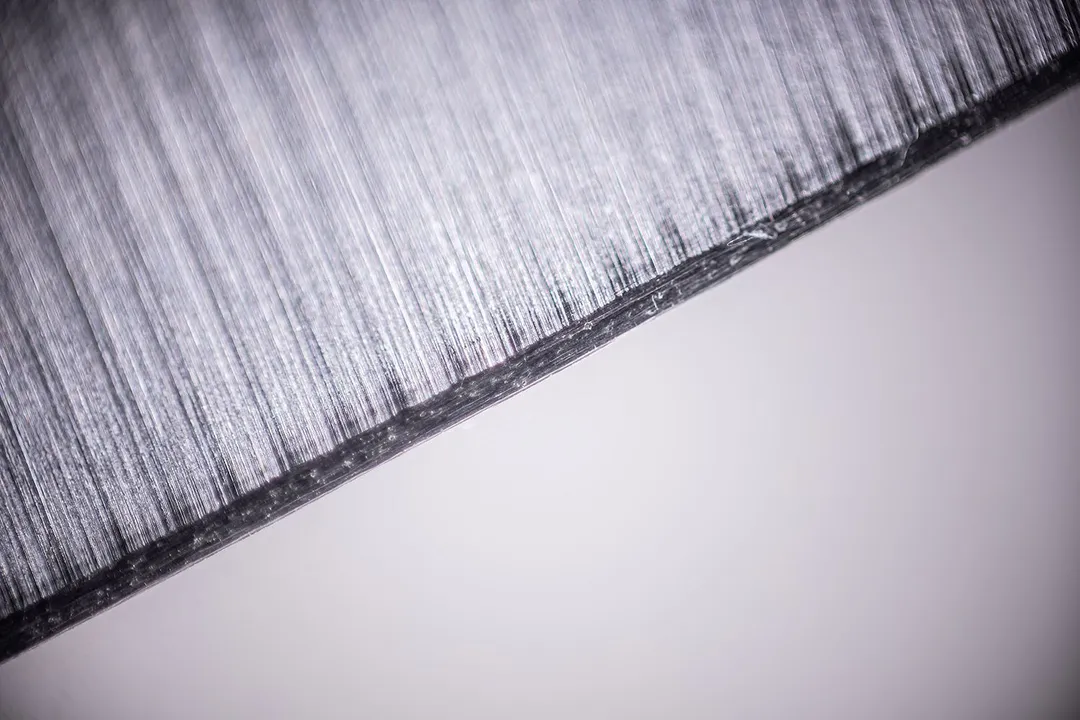
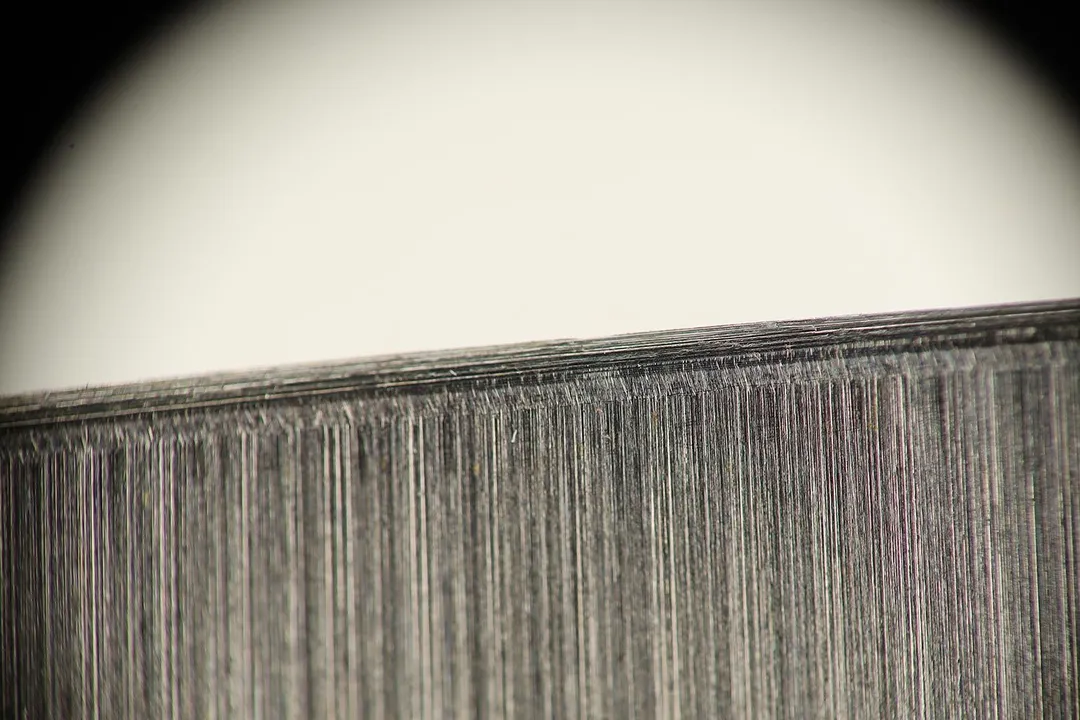
Design
In the Box
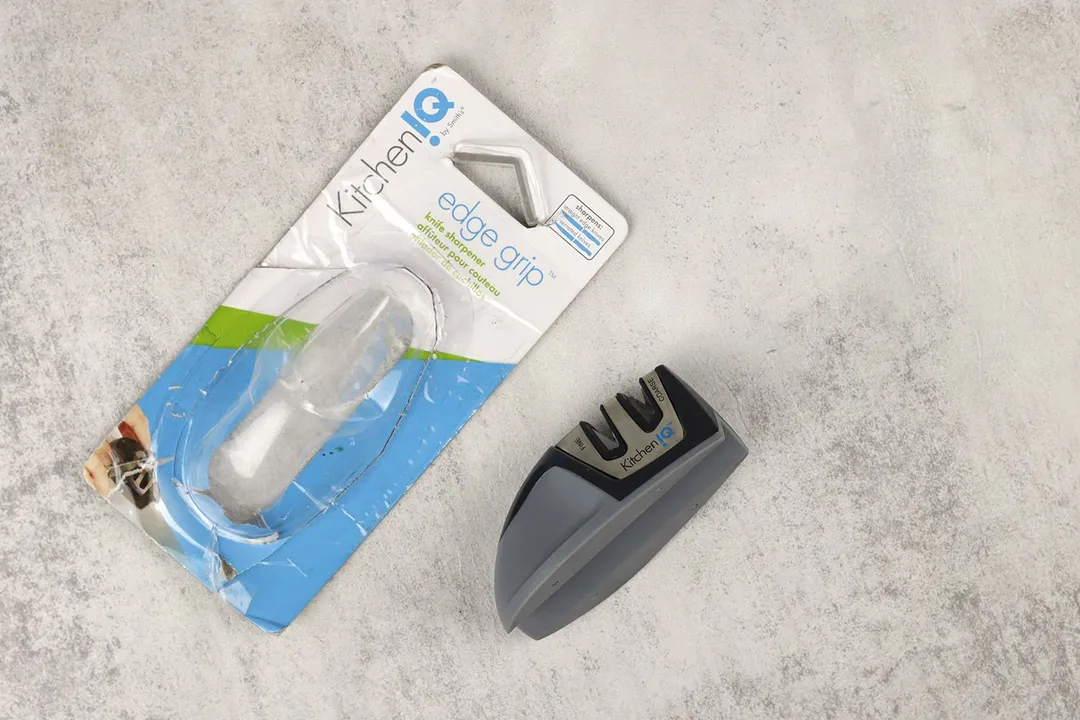
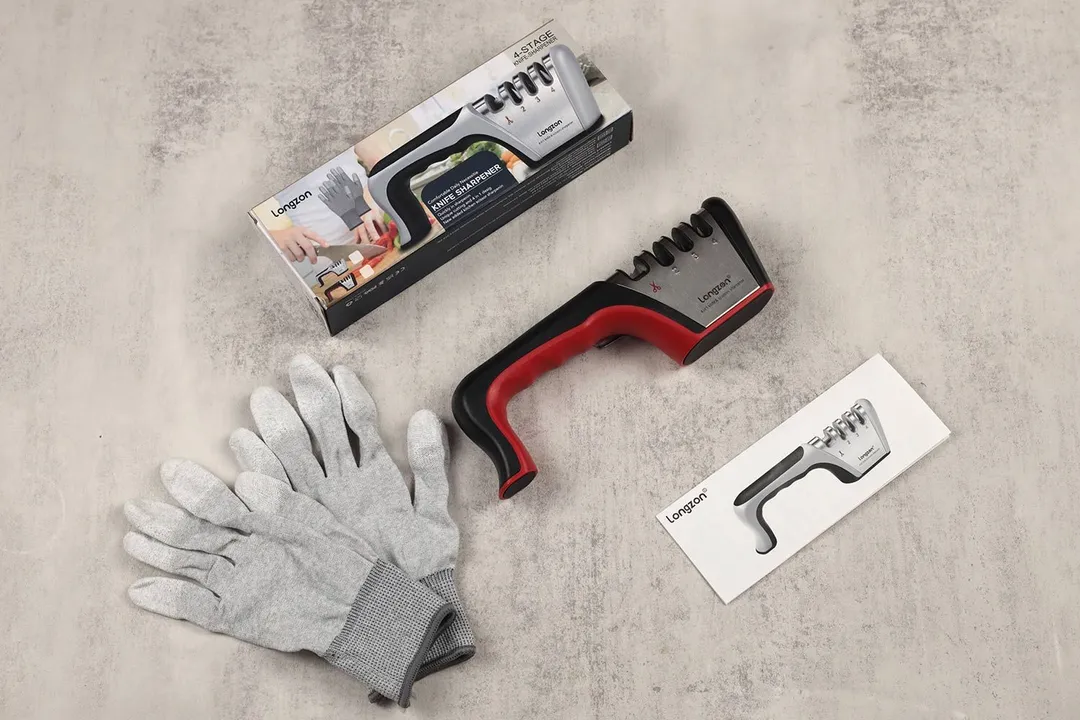
Dimensions
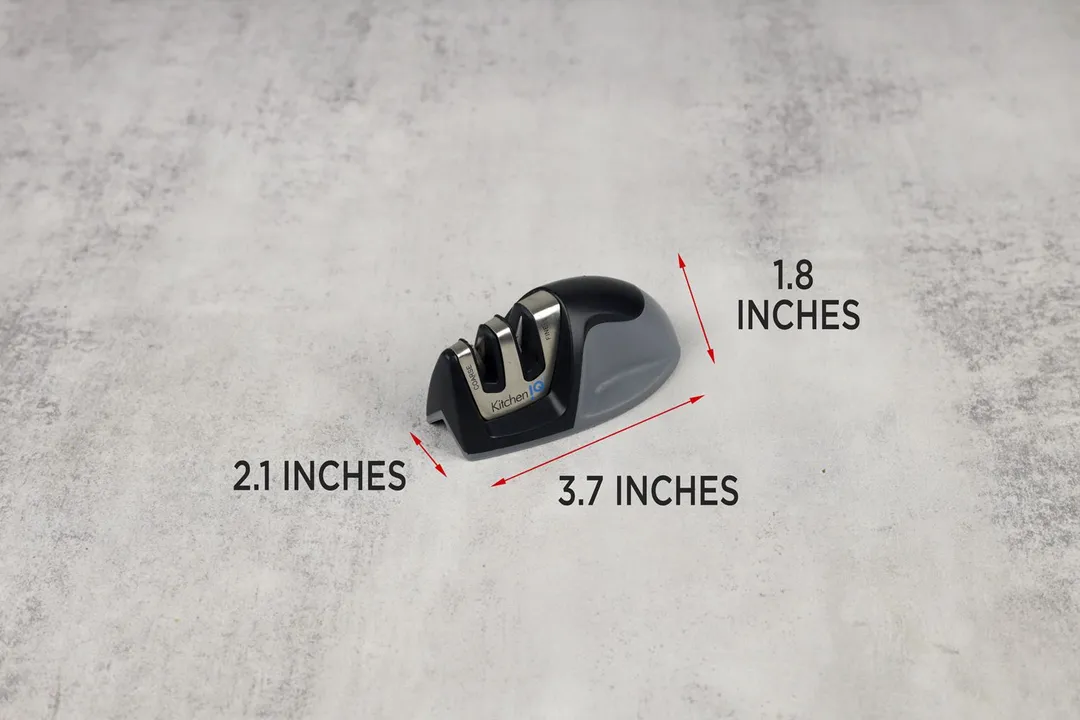
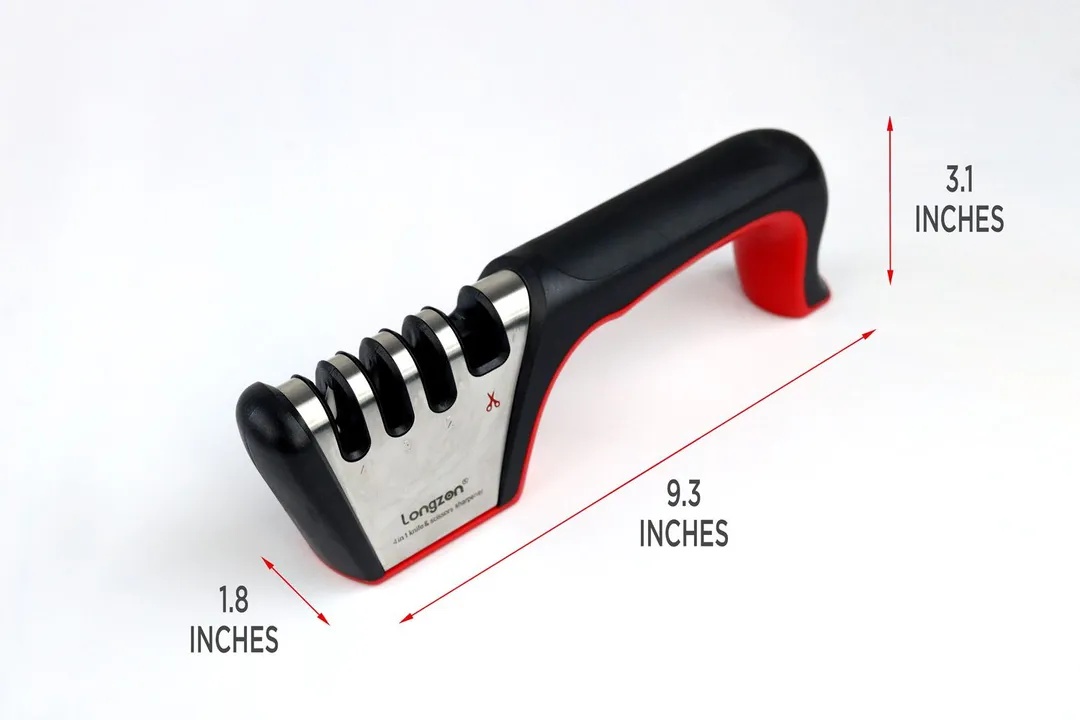
Build Quality


Working Section
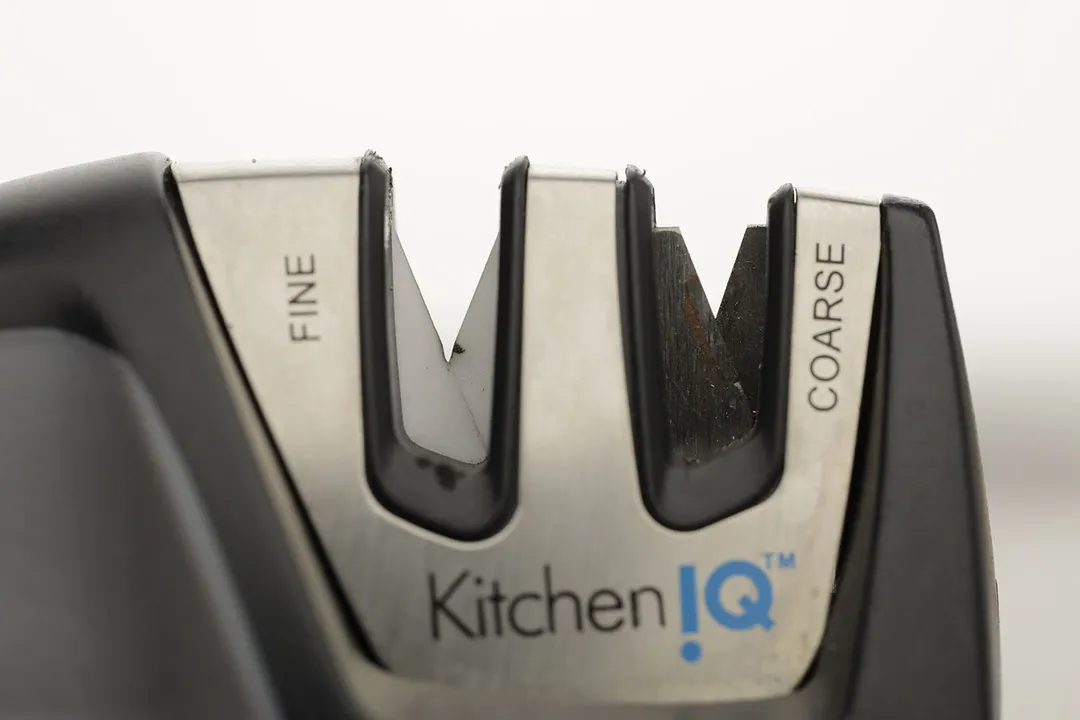
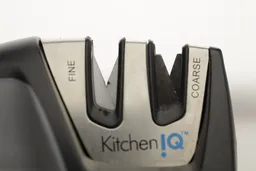
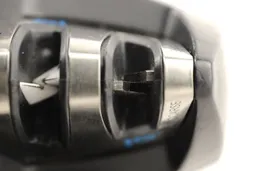
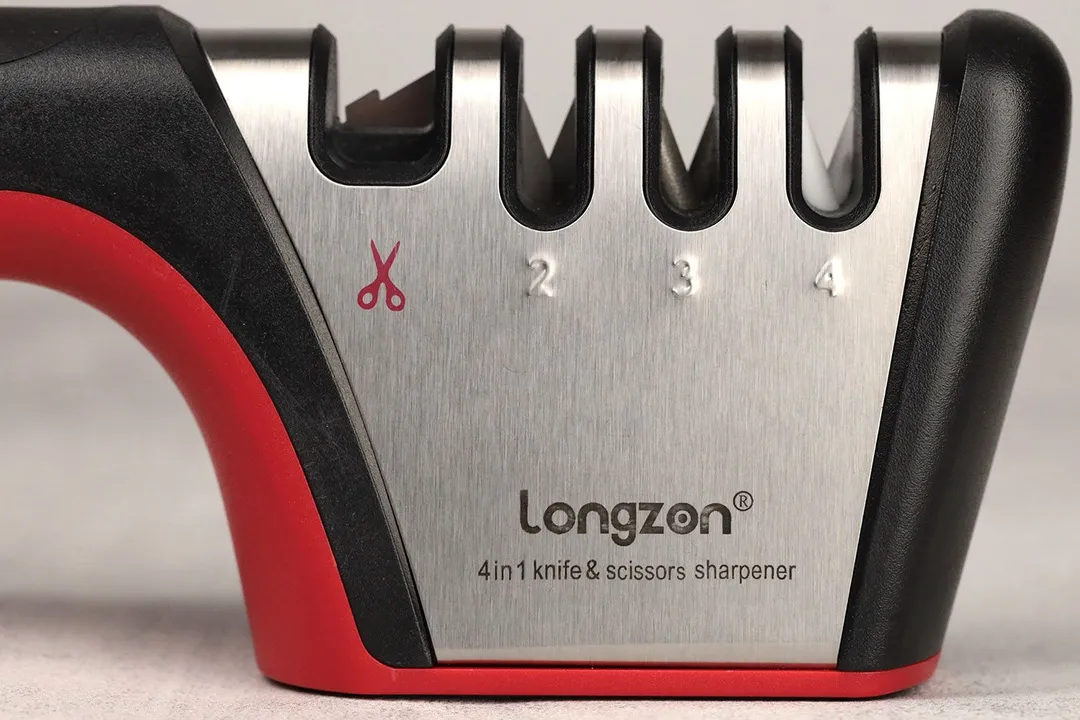
Base
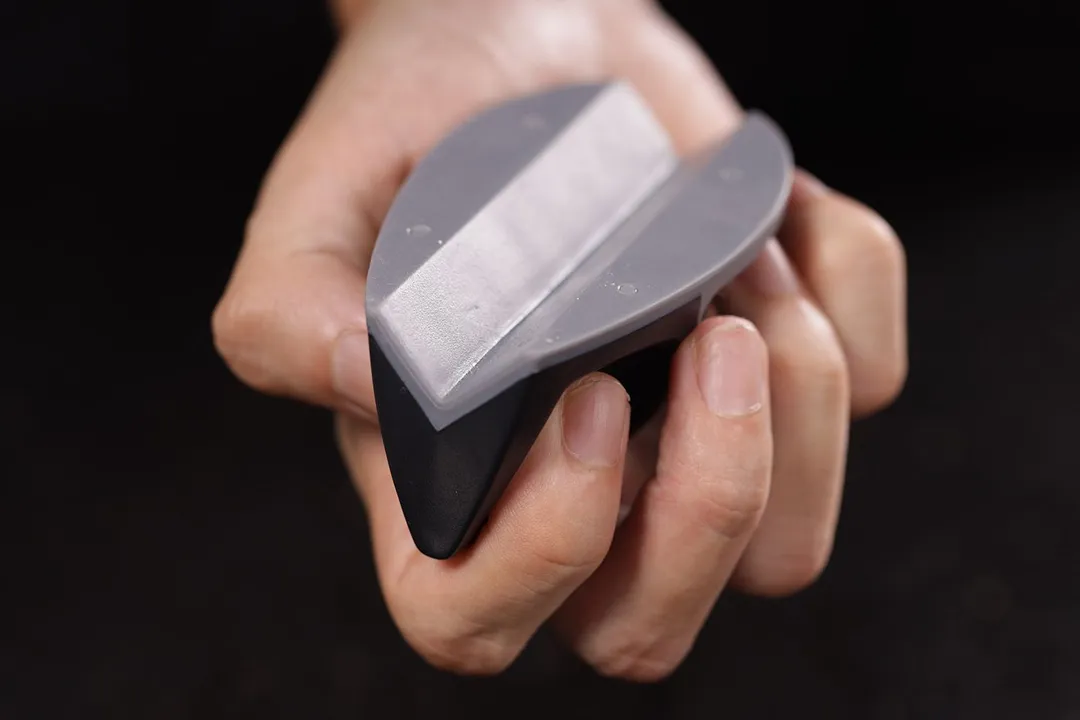
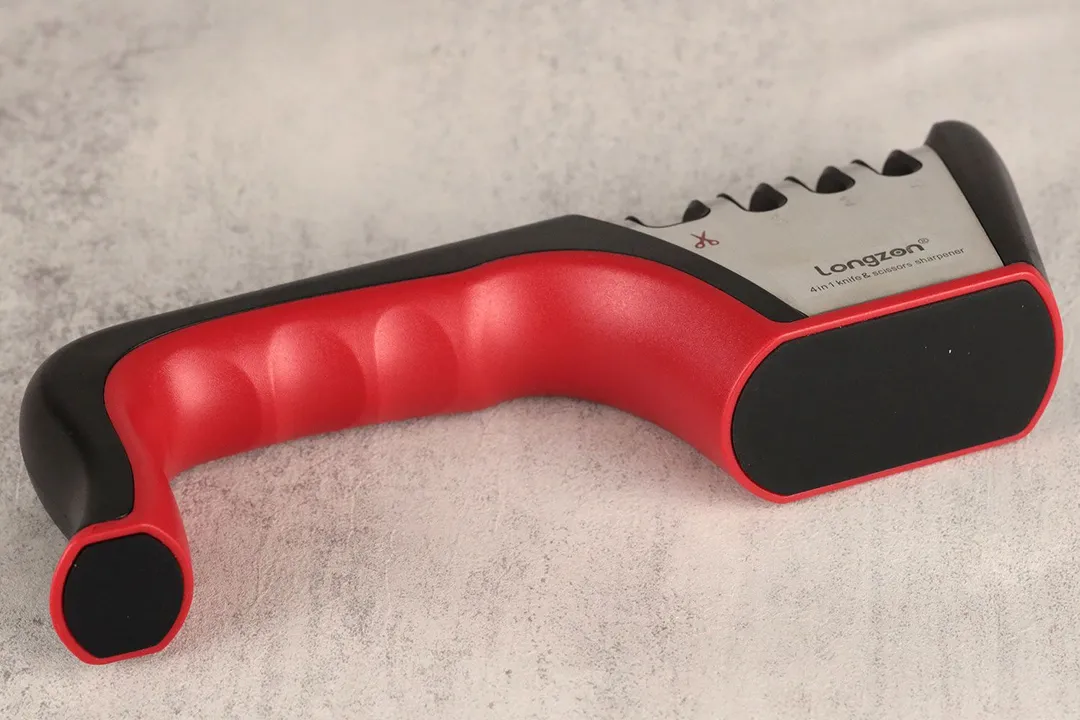
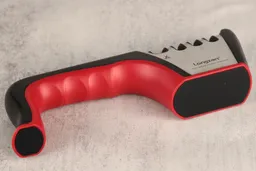
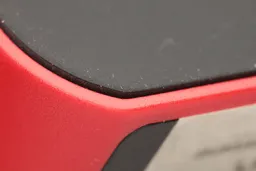
Grip
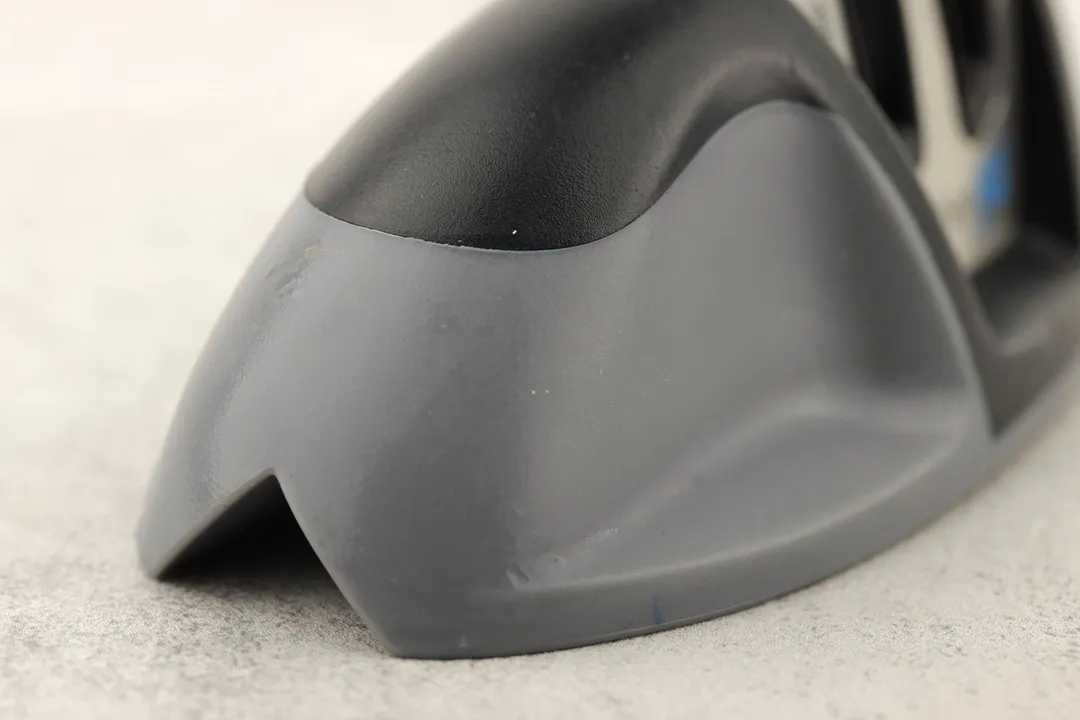
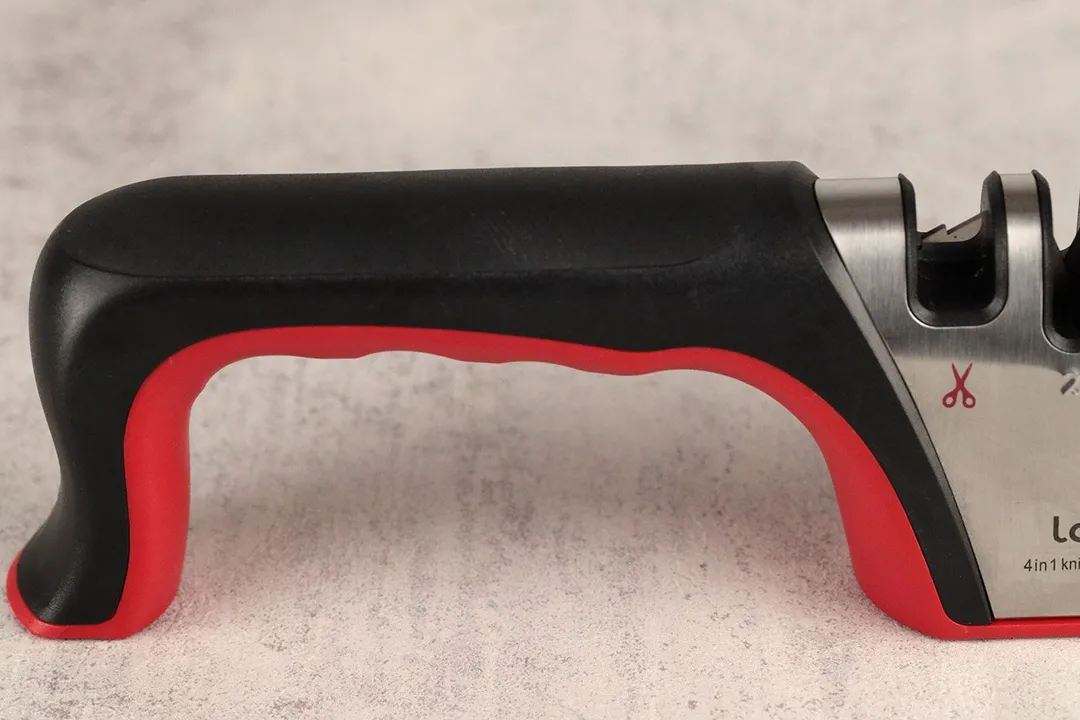
Usability
Slot Arrangement
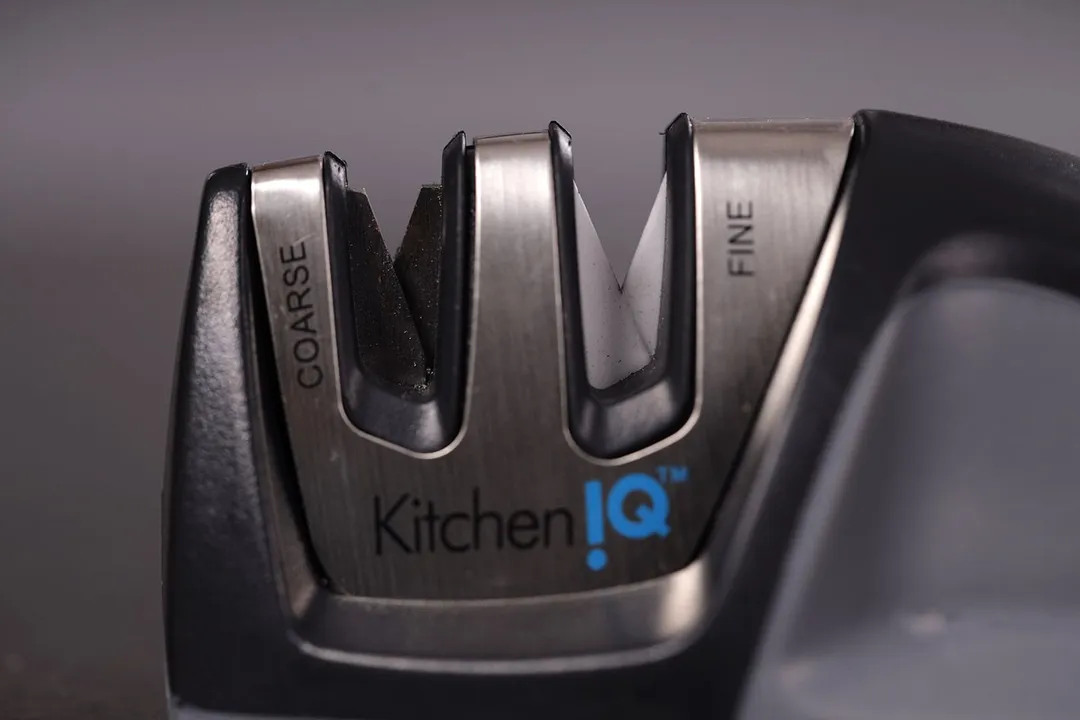
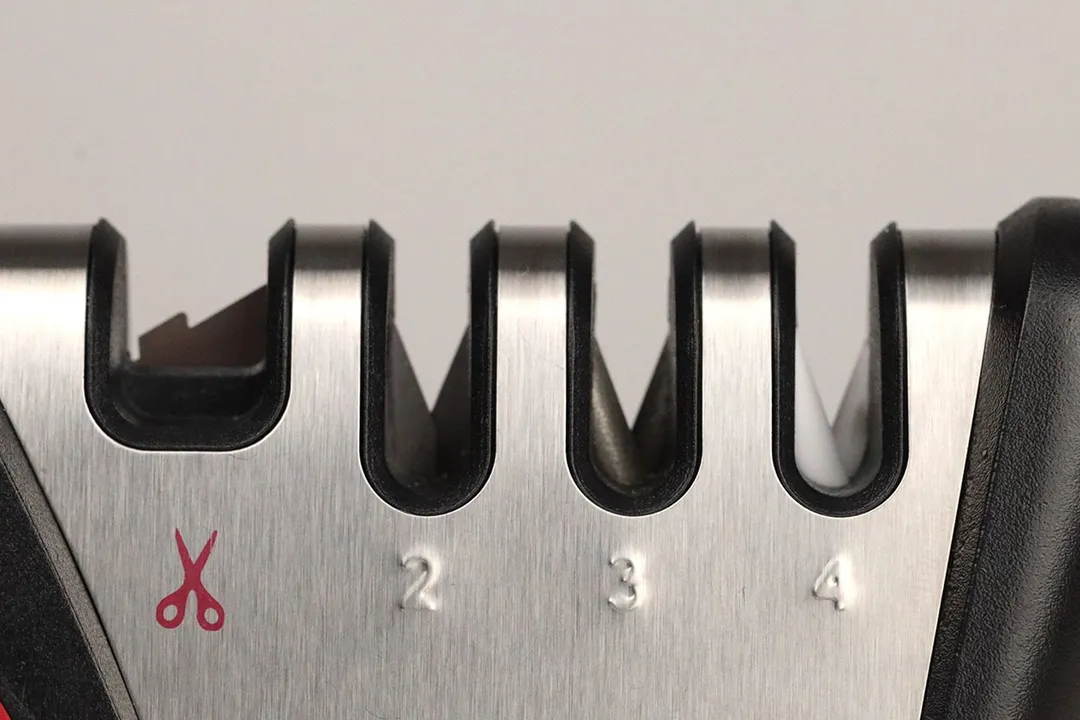
Insertion
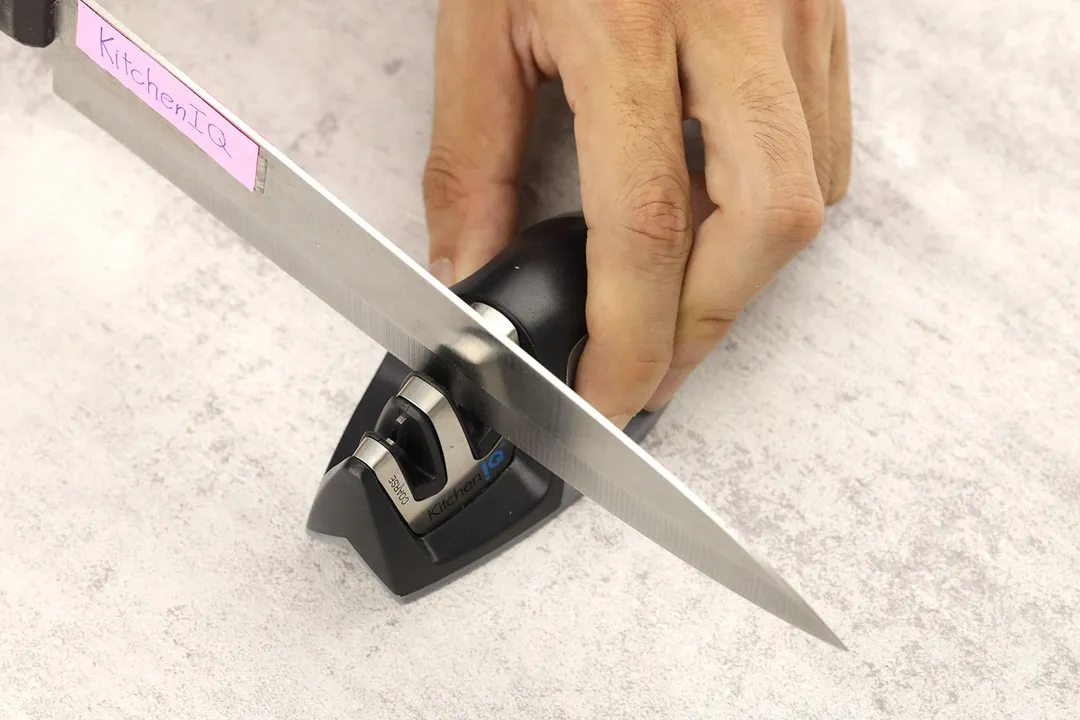
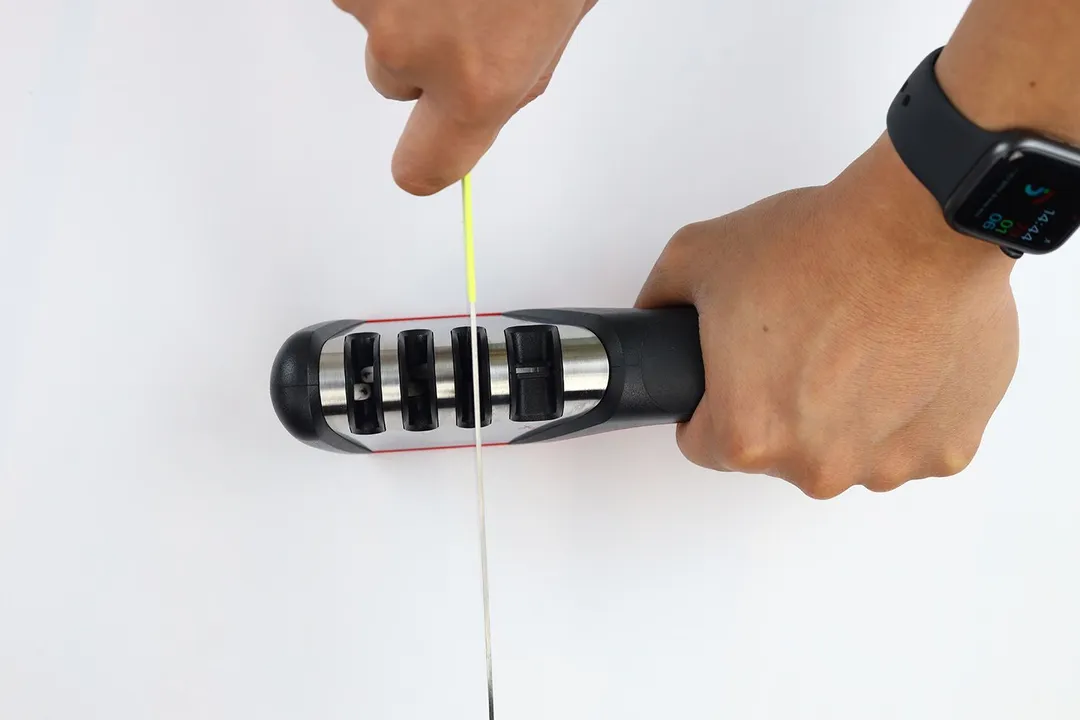
Pulling Through
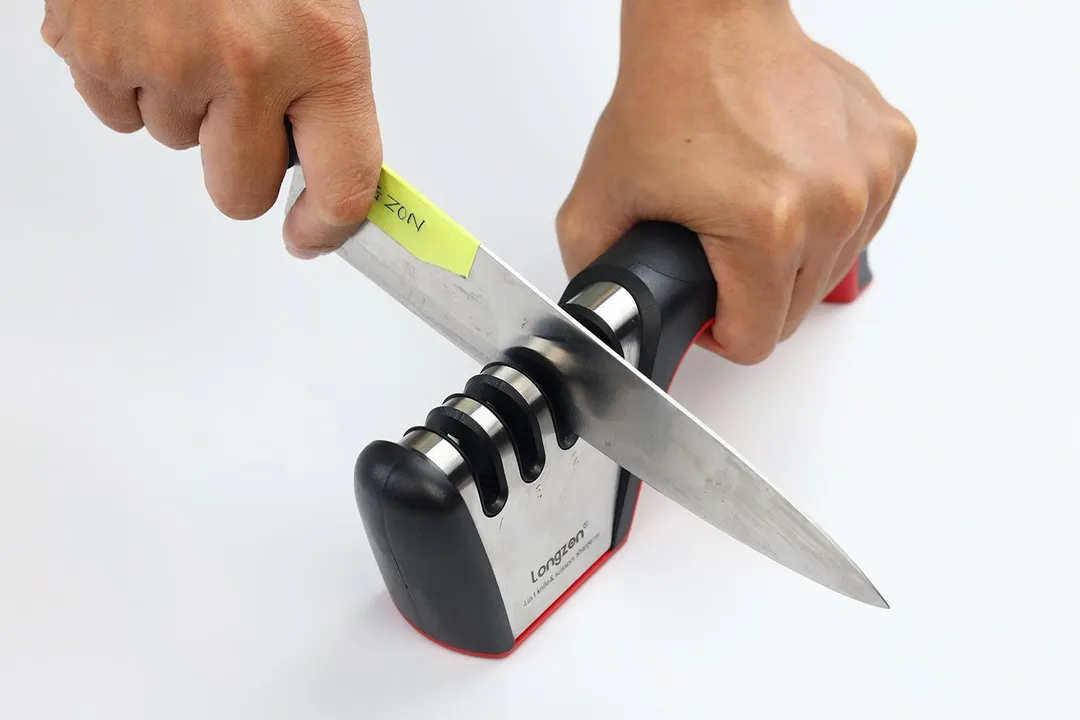
Stability on a Clean Surface

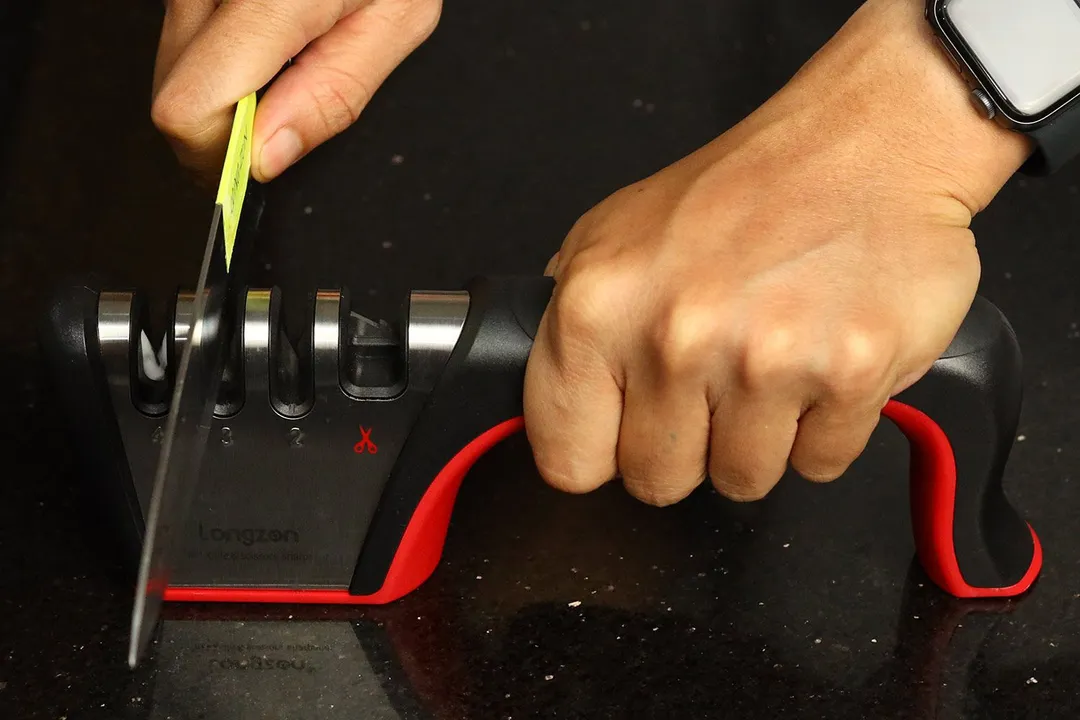
Stability on a Wet and Dirty Surface
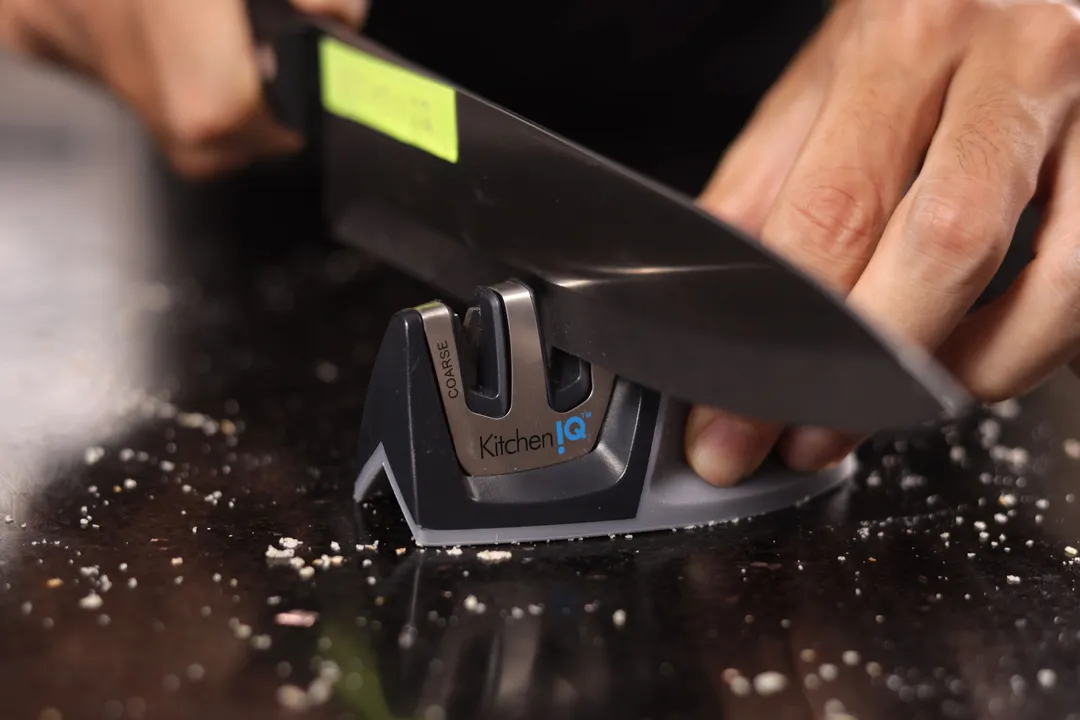
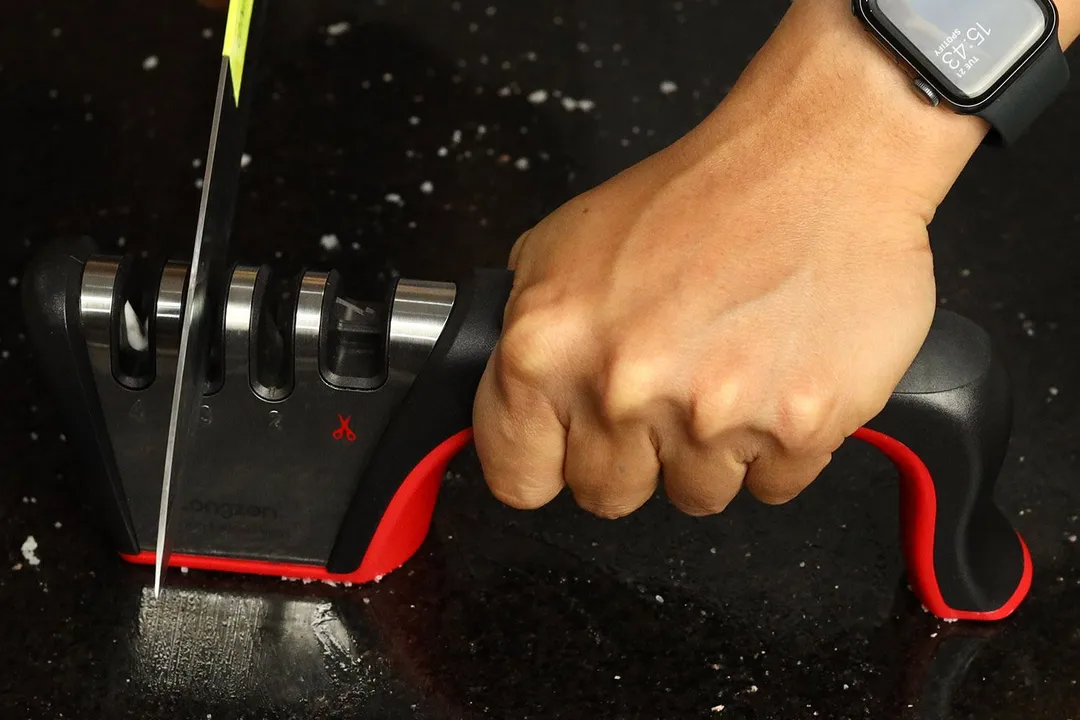
Behind the Comparison
Anh Ngo is a writer with 9 years experience at different media outlets, covering from public news and events to product testing and analysis. At HealthyKitchen101, she works across different departments, communicating closely with its network of writers, editors, and health, tech, and search engine experts to provide a meaningful and pleasant reading experience for visitors.
Lap is Head of the Research, Testing, and Review Team (RTR Team) at HealthyKitchen101.com, where he directs and supervises the testing of kitchen gadgets and appliances.
Nguyen Ntk is a graphic designer, photographer, and videographer whose philosophy centers around respecting and celebrating the beauty of reality. Through his lenses, Nguyen strives to capture the true essence of objects and events, showcasing and highlighting authentic features without distortion or exaggeration.



